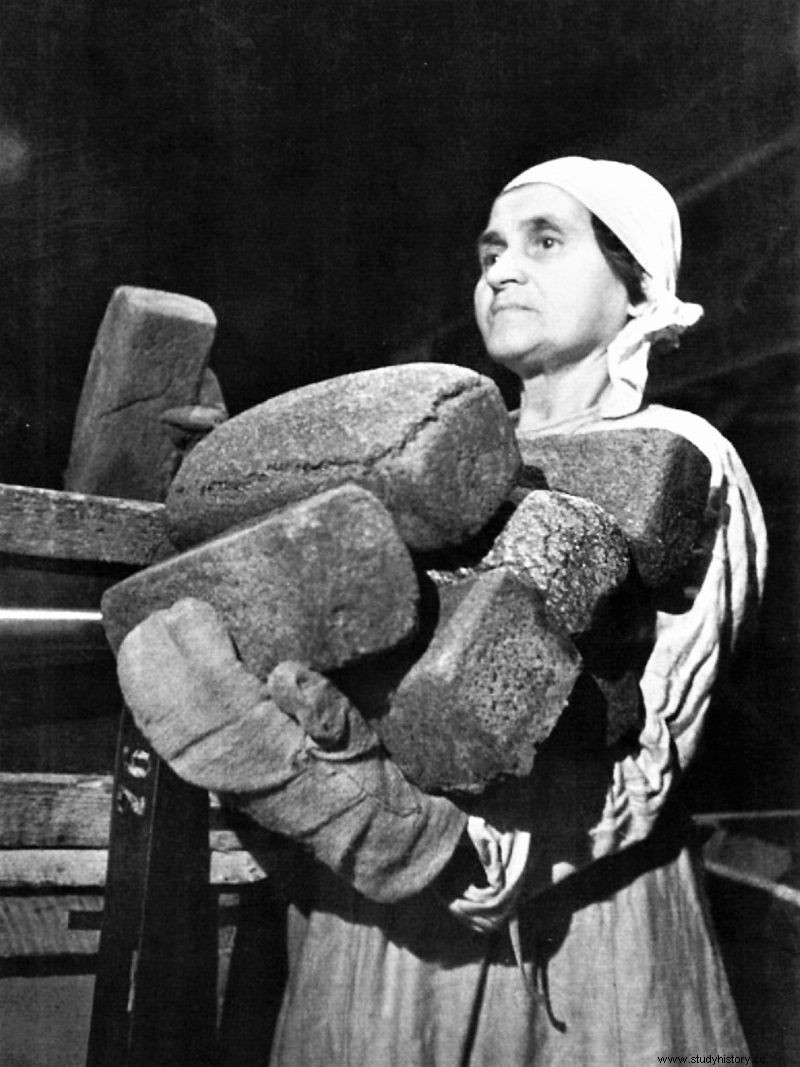When in 1941 the Germans failed to take Leningrad by storm, the Oberkommando der Wehrmacht decided to force the city to capitulate by starving it. The Germans did not expect the Leningrades to survive the siege after all. Only at what cost?
Anthropophagy, or cannibalism, is one of the greatest taboos of the modern world. In addition to the cultural background, it also has a very good biological justification. Eating meat from other Homo sapiens carries enormous health risks due to virus-like proteins.
Nevertheless, there have been many histories of man having to resort to eating his own kind in order to survive. The topic of Soviet Russia is extremely interesting in this respect, in which the actions of the authorities have repeatedly led to famines so dramatic that they pushed people to break this greatest taboo.
When the Germans closed the blockade around Leningrad in 1941, the supply situation in the city was very difficult. On September 8-10, the Luftwaffe destroyed the Badajewskie Magazines. In this one place, city officials thoughtlessly gathered, as Alexis Peri emphasizes in a new book, Leningrad. Journals from the besieged city ” , and so meager food supplies. The provisions that were in the city, according to calculations, were to last only 17 days. Food rations were reduced by as much as 80% at an express pace, and at the same time, on the orders of the authorities, bread was still cheated on. The winter of 1941/1942 turned out to be the hardest time of the entire siege.
Starve the whole city
The situation became more and more dramatic from week to week, and in November, as Peri points out in the aforementioned book , food rations hit their lowest level - 125 grams of bread per day. Such a microscopic allocation was given to as many as 2/3 of the city's population. In the same month, the NKVD arrested the first Leningrad cannibal.
The problem of anthropophagy began to escalate rapidly. According to Richard Bidlack and Nikita Łomagin, who studied the history of the siege on the basis of documents from Russian archives, murder and cannibalism became a significant problem.

In besieged Leningrad, bread became more valuable than gold. If you couldn't get it, there weren't many alternatives ... (photo by Sergey Strunnikov, public domain license)
According to declassified documents in 2004 , about two thousand people were arrested for cannibalism. According to scientists, eating human flesh was classified in the criminal code as a socially dangerous crime, similar to banditry.
Nine cases of cannibalism were described in detail in the NKVD report of December 12, 1941. We have already quoted some of them in our other article.
Hundreds of cannibals every month
Food crime became more common with each passing day and week. People stole, murdered, robbed bread shops and ... ate each other. Stalin and Lavrenty Beria, the People's Commissar of Internal Affairs of the USSR, knew everything perfectly well, and they regularly received reports on people arrested for criticizing power, increasing mortality, stealing food stamps and cannibalism.
To counteract the latter, the NKVD created special brigades composed of policemen and psychiatrists. Meanwhile, the problem was getting bigger and bigger. The numbers from the first winter of the siege were frightening. Bidlack and Łomagin cite exact statistics of arrests of cannibals by the NKVD:
December 1941 - 43
January 1942 - 366
February - 612
March - 399
April - 300

It is worth emphasizing that these are only those who have been caught. And as the accounts of the siege survivors show, there were many more cases of cannibalism. As reported by Alexis Peri in the book "Leningrad. Journals from the besieged city ” Two-thirds of those arrested for cannibalism were women who motivated their actions to save their own children. Moreover, relatives were eaten more often than strangers.
There are many records from the siege period mentioning parents eating their own children or feeding their offspring with humans (even from their siblings!). One such example is provided by Alexis Peri :
Alexander Mironov, whose job was to save abandoned and thrown children, wrote about the children of a certain Kaganov, whom their mother fed on human flesh in a desperate attempt to save them from death. The author admitted that she was afraid to hang out with these "terrible, dirty" children and that "the caretaker did not want to enter [with her] into this apartment." It was difficult for Mironowa to persuade the children to go to the orphanage with her because they "did not want to leave the raw meat behind".
According to Bidlack and Łomagin, on the basis of statistical data from NKVD reports, it is possible to create a social portrait of a typical cannibal from the besieged Leningrad. Two-thirds of them are women. 85% are refugees from other areas who got stuck in a hungry city with no back-up facilities:
In other words, a large proportion of the people accused of cannibalism were ordinary women with little or no means of subsistence who sought refuge in Leningrad but failed to evacuate before the blockade begins. Probably many of them did not have food stamps. They desperately needed food and were ready to feed their children in any way possible.

Starving Leningradians fell into apathy, starvation dystrophy, or died of exhaustion. There were also those who were so desperate that they began to eat the corpses (photo:public domain)
Have the cannibals lost their minds?
On January 20-23, 1941, a conference was convened with the participation of top-class medical experts on cannibalism. This group includes eminent psychiatrists, among others. Specialists were to help prosecutors and military tribunals in trying cannibals. The authorities wanted to know whether cannibals were to be considered sane and therefore accountable for their actions. Medical experts recommended treating each case separately, stressing, however, that all of them are dangerous to society and should be isolated.
In their opinion, those who resorted to anthropophagy were often sane, and at the same time could not be considered unrepentant criminals. By the time of the conference, 59% of cases of people accused of cannibalism ended in execution , many of them starved to death in prison, and some of them do not know what happened. Experts' recommendations made military tribunals and prosecutors look at the guilty ones with a slightly more favorable eye. Those who lost their senses of cannibalism, had never been punished before, or decided to cannibalism to save their loved ones, were no longer sentenced to death as often.
Information resources
- Barber J., Dzeniskevich A., Life and Death in Besieged Leningrad 1941-1944 , Palgrave Macmillan 2005.
- Bidlack R., Lomagin N., The Leningrad Blockade, 1941-1944. A New Documentary History From The Soviet Archives , Yale University Press 2012.
- Glanz D.M., The Siege if Leningrad 1941-1944. 900 Days of Terror , Spellmount 2001.
- Peri A., Leningrad. Journals from a Besieged City , Horizon 2019 sign.
- Reid A., Leningrad. The tragedy of the besieged city, Wydawnictwo Literackie 2011.
